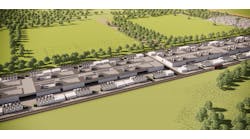By Elisa Wood
April 1, 2010
The energy world is about to turn upside down. With the coming of smart grid, the electricity consumer becomes the electricity seller; the passive home appliance becomes the active energy manager; the grid repairman becomes the grid itself.
Such an upheaval means that the energy world needs to start thinking about a new business model, says a recent report by IBM Global Business Services Energy and Utilities.
The fact that IBM is advising the energy industry is itself a point of interest, yet another signal of the new market opportunity emerging within the energy arena for information technology. This opportunity has drawn the attention of not only IBM, but also CISCO, Google and many others.
So how does IBM see the energy business model changing? First consider what it has been for the last century: a grow-and-build model. This model brought universal electrification to the United States. Utilities encouraged more and more consumption, and they built power plants and transmission to the far corners of the nation to serve the growing demand.
“The success of this strategy was remarkable. In the United States for example, from 1920 to the mid 1960s (excepting the period of the Great Depression), usage increased at seven percent annually – about five times the rate of usage of all forms of energy combined and three times the rate of economic expansion in general,” says the IBM report, “Switching perspectives: Creating new business models for a changing world of energy.”
But today we no longer need such expansion. The grow-and-build model is obsolete, yet continues to be used by utilities. As a result, utility stocks, which in the 1940s-1960s significantly outperformed the Dow Jones Industrial Average, now lag well behind.
Instead of expanding their territory, utilities are being called upon to change their product — to offer energy that is more efficient and clean and service that is more consumer-friendly.
Smart grid technology can help utilities meet today’s imperative. But it brings with it a new and complex relationship between customer and utility. This is because smart grid allows consumers to control energy usage via a home computer. Heck, their appliances can control energy usage without the consumer doing anything. And with increased use of solar energy and other distributed technologies, the home also becomes power plant and storage facility for the electric utility.
“Companies willing to tackle industry model innovation and sit at the nexus of new complex relationships among business partners and customers will be well positioned to create and capture new demand for emerging products and services. Strong growth in revenues and profits – albeit accompanied by some risks – is achievable in multisided business models because of the embedded network economies of scale (i.e., margins increase with network size),” says the report.
IBM calls this new business model “a multisided platform.” What does it look like? Think shopping mall.
“Manufacturers, retailers and shoppers all benefit from having a single location where they can meet and transact business. A wider variety of stores and services brings more shoppers; more shoppers bring higher sales volumes for manufacturers and lower costs for retailers (and, in theory, also lower prices for shoppers). Thus, some element of network economy is bundled into the shopping mall value proposition. The platform owner (the mall operator) extracts some of this value in the form of rent to store owners and, in some cases, service fees to shoppers,” says the report.
If indeed this is the future, it won’t be embraced quickly or easily by utilities, which are notorious for their caution. For those who do move forward, here is some of what IBM advises.
Be sure your current customer base is sizable enough to ensure that you get a meaningful head start.
But don’t hurry. History has shown that later movers may actually benefit from standing back from the first wave.
Time the announcement of your new business model carefully to avoid shocking long-time constituencies or alerting rivals too soon.
Consider corporate culture changes that will ensue.
What might this new model mean to the utility business? A new kind of grow-and-build. Except this time the industry will not conquer the frontier with power plants and transmission, but information technology. See the full report here: http://www-935.ibm.com/services/us/gbs/bus/html/ibv-electric-utility-innovation.html?ca=rss_bcs
Visit Elisa Wood at http://www.realenergywriters.com/ and pick up her free Energy Efficiency Markets podcast and newsletter.






